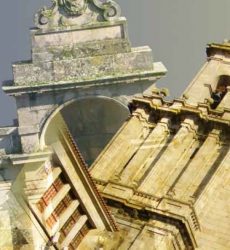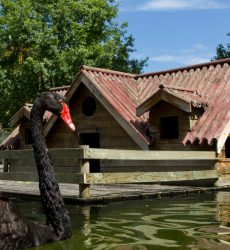
Alameda Park
Rúa do Progreso, 53, 32005
Of medieval origin, this place still retains the charm of late 19th century, with beautiful examples of Modernist architecture.
ES | GL Alameda
Of medieval origin, these gardens are nowadays one of the places that still retain the charm of the late 19th and early 20th centuries, with superb examples of Modernist architecture. Crossed by Progreso street, its upper half is called Bishop Cesáreo’s Gardens, and is centered by a beautiful fountain coming from Oseira Monastery. In one corner, a sculpture devoted to writer Eduardo Blanco Amor seems to contemplate the quiet strollers at this mall, a transition between medieval and modern Ourense.
Although its history began in the Middle Ages, its splendour will come with the burgeoning bourgeoisie of the early 20th century, raising beautiful Modernist buildings designed by Vazquez Gulías, the architect of La Toja Spa and the Galician Centre in Havana.
Former site for the councils, which were the neighborhood meetings where the public affairs of the medieval city were discussed, it was also the municipal orchard planted with olive trees. St Roch’s Hospital was settled in its central part. With the opening of the old road Vigo-Villacastín, nowadays Progreso street, it was transformed into an urban space with large buildings representative of that time, halfway between the 19th and 20th centuries. The aesthetic ideal of the powerful local bourgeoisie was felt in the works of the architects of the time, Daniel Vázquez Gulías (the Román House, with its beautiful gallery; the Barcelona Hotel, the Junquera House) and Manuel Conde (the Market building) among others. With their works they replaced the modest buildings in the square, of whuch only drawings remain. Also noteworthy in the new Bishop’s Palace, designed in the late 19th century by Queralt, which was conceived as a seminary.
The lower Alameda, in turn, stands on the river Barbana, at the end of a tree-lined promenade where there is a female sculpture by Luís Borrajo. A bandstand, a fountain and a pergola complete the set, giving way to a place that today is still the centre of many of the city celebrations.
Two proposals for discovering Ourense’s bimillennial history through its main monuments and landmarks.


